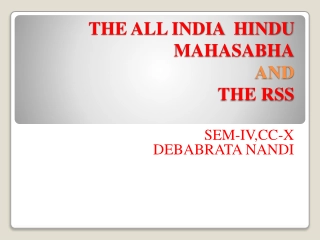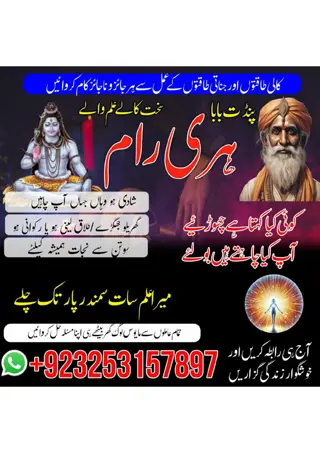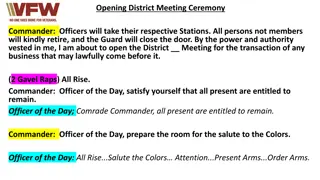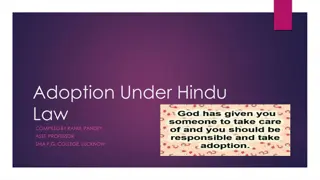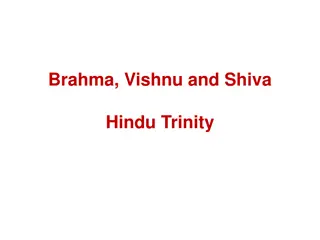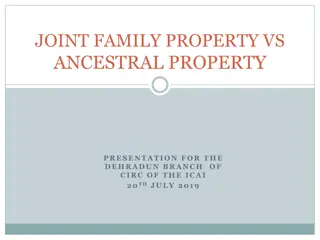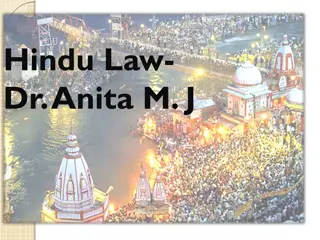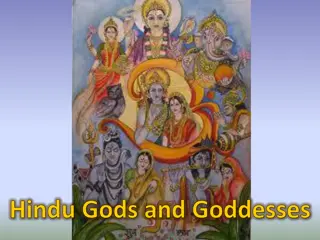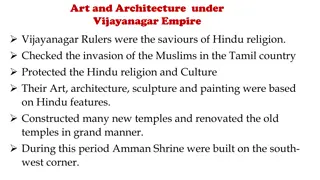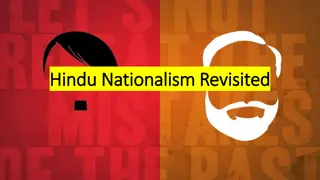Hindu Upanayana Ceremony Explained
The Upanayana ceremony, also known as the Sacred Thread ritual, is a significant Hindu rite of passage for boys, akin to the Hindu Bar Mitzvah. It symbolizes the transition to youth and the beginning of a quest for knowledge of sacred scriptures. Over a two to three-day period, the ceremony includes various rituals conducted in Sanskrit. The young boy receives blessings, dons the Sacred Thread, and learns the Gayathri Mantra from his father. Discover the essential steps and rites associated with Upanayana in this detailed exploration of the sacred tradition.
Download Presentation

Please find below an Image/Link to download the presentation.
The content on the website is provided AS IS for your information and personal use only. It may not be sold, licensed, or shared on other websites without obtaining consent from the author. Download presentation by click this link. If you encounter any issues during the download, it is possible that the publisher has removed the file from their server.
E N D
Presentation Transcript
The Sacred Thread Ritual Analysis
Summary of Ritual It could be called the "Hindu Bar Mitzvah"--the coming-of-age ceremony for a boy when his parents believe he is mature enough to learn our sacred scriptures. This ritual, known as the Sacred Thread ceremony (the Upanayanam in Sanskrit), can take place during any odd-numbered year in a boy's life, usually when he is seven, nine, or 11 years old. There is a solemn religious rite that inducts the little boy into youth, followed by an exchange of gifts among family members, and finally a sumptuous feast. The Gayathri Mantra is learnt--the supreme and most sacred of all Hindu mantras, which is the basis of all other mantras and the essence of the Vedas (a Hindu scripture).
The ceremony is held over a two- to three-day period, including the pre-event rituals. All rituals are primarily said in the Sanskrit language. The gods and the ancestral spirits are invoked to bless the boy before he receives the Sacred Thread. After receiving blessings from his parents and other elders in the family, and a few other rituals, he puts on the thread. In the climax of the ceremony, called the Brahmopadesam, the boy s father becomes his guru/teacher, and under the cover of a white cloth, called a veshti in southern India and dhoti in the north (and usually worn around a man s waist), the father whispers the powerful Gayathri Mantra into his son's ears.
There are various rites, which are connected with "Upanayana". Some of them are- Last feeding by the mother (Matribhojan) Choula (tonsure and bath) Wearing loin-cloth and Mounji girdle (Kaupina) Putting on yajnopavita (scared thread) Carrying danda (staff) Initiation by Guru through recitation of Gayatri mantra Seeking of alms by the boy (Bhiksa) Adopting sandhyavandan prayer for life
Important steps of Upanayana Example with English subtitles Ganesa Puja The novice undergoing Upanayana is called Va u. The prescribe age-limit for the Va u is between 7 and 12 years. it is best to perform Upanayanam in the spring season around February April. On the day prior to Upanayana, the parents of Va u should perform the worship of Gane a P ja. On the day of the Upanayana the Va u and his mother are to eat from the same leaf plat. (Its avoided in the r triyas house. instead of mother sister has to sit here). Its for the last time, that they can eat like this. It is signifies the end of the childhood days of the Va u and a life of unbridled conduct. Hereafter he cannot act and behave as he likes, but should subject himself to socio-religious norms conduct. Ganesh The friendly god Video Who is Ganesh? Video
Then, he has get his head to shaven, leaving a Sikh (a tuft of hair) at the appropriate place, take bath and wear a new set of dress comprising Koup na (loin-cloth), Dhothi and Uttariyam (Upper cloth). A gridle made of Munja grass also should be worn round the waist. It is this that is technically called Mounjibandhana. This indicates the beginning of a life of Brahmacharya or self-control, of which celibacy is the most important
Next comes the wearing of the Yajpavta or the sacred thread. The ch rya (chief priest) makes the Va u wear it with appropriate Mantr s so that it hangs from the left shoulder to right loin. This sacred thread comprises three strands of strings and the knot resembles a cow in the sitting posture. At the time of the Upanayana a small piece of Krish jina (skin of a black antelope) is also tied to this sacred thread. In the ancient days people used to wear the skin of a black antelope or an upper cloth during Yaj y s or the sacrifices. The Yaj pav ta is a remnant of that practice. When the Va u wears it, he should think, From today my life is like a Yaj ya or sacrifice. I will dedicate it to the welfare and service of the society! The three strands stand for the three V d s thereby reminding him that he has to study them and incorporate their message in his life. They may also represent purity and control of body, speech and mind, which again should be dedicated to the service of the society. Video of Upanayana Ceremony Importance of Upanayana and mantra video
The next step is holding the Danda or the staff made of Pal sa wood (Butea Frondoza). Actually the Va u is expected to keep it throughout his student-life as an inseparable companion. It stands for Dama or control of the sense-organs at the psychological level. In his day-to-day life at the Gurukula, it helps him to take care of the cows of the household and also comes in handy in times of dangers as a weapon for self-protection.
Gayatri Mantra is a Vedic Hymn which promotes righteous wisdom. It means; may the Almighty illuminate the soul of beings and lead them to righteous path. It is the most important teaching, and all the problems one faces, can be solved if he possesses the righteous wisdom. Having the far sighted wisdom, a man is neither tangled in calamity nor does he adopt a wrong path. Righteous wisdom starts to issue as soon as Gayatri Mantra is recited. Gayatri is a Sanskrit word in which 'Ga' means to sing and 'Yatri' means protection. The first record of Gayatri Mantra is in Rig Veda, written in Sanskrit about two thousand five hundred to three thousand five hundred years ago and the mantra has been chanted for various generations till now. This is the most august mantras in Hinduism and bears its reference in all the four Vedas. In the Athava Veda it is little different from the actual Gayatri Mantra. After the Va u circumambulates the sacred fire and offers sacrificial fuel into it, the ch rya administers him certain vows. They are: performing chamana (ceremonial sipping of water with certain Mantr s) before any religious rite, control of speech, avoiding sleep during the day and offering fuel sticks into the sacred fire and so on. This Mantra is the most-honoured mantra in Hinduism, based on a Vedic Sanskrit verse of the Rig Veda. It is attributed to the Vishwamitra. This mantra is famous for its Vedic Gayatri meter. As the verses of this mantra invoke the Deva Savitr, it is also called the Savitri. The chanting of the Gayatri Mantra is conventionally preceded by Oum and the formula Bhur bhuvah svah, known as the Mahavyahrti or the great utterance. The Goddess Gayatri is not new or an independent goddess. She is regarded as the Shakti or supreme power of Lord Brahma, Lord Vishnu, Lord Rama, Lord Shiva and Lord Krishna. Gayatri means; those worshipping her are protected. The Gayatri Mantra is also considered to be a verse in Sanskrit Language which is scientifically prepared, consisting of two lines with special information for invoking divine powers. Then somes S vitri Upad sa , the heart of whole sacrament. It means imparting the G yatrimantra . S vitri or Savita means god the creator. He is identified with the sun. he is the supreme lord residing in the heat of the sun. Hence the real name of the Mantra is S vitrimantra. Since it was revealed to the sage Visw mitra, for the first time in the Vedic Mantra known as the G yatri, the Mantra itself has been identified with it and has popularly come to be known as the G yatrimantra. The charya has to teach it to the Va u, little, with proper intonation until he picks it up completely. This Mantra is mentioned and repeated widely in Vedic literature, and it is praised in various well-known classical texts of Hinduism like the Bhagavad Gita, the Manusmruti and the Harivamsa. The Gayatri Mantra is also a prominent part of the Upanayana ceremony in Hinduism for young males, and it has been narrated by male Brahmins for long as daily rituals. The modern Hindu reform movements spread the practice of this Mantra by including both men and women belonging to all castes. The Gayatri Mantra is having twenty-four syllables with three lines of eight syllables each. "Aum Bhur Bhuvah Swah" is the first line which is an invocation, and it does not technically form a part of the Gayatri Mantra as it is in the Upanishad. Gayatri Mantra is also called a Vedic poetic meter of twenty four syllables or any hymn wrote in this meter. Hence, there is a complete family of Gayatri Mantras, which assist in the meditative aids to pray for the blessings of a particular personal God.
Next comes the offering of the fuel sticks into the duly consecrated fire (the has already been prepared by the charya) with proper Mantr s signifying prayers for long life, brilliance, intellectual acumen, general competence, name and fame as also (in course of time) good offspring. Last comes the begging of food by the Va u from his own mother and other elderly ladies of the family. Since he has to beg his food as long as he lives in the Gurukula, this ritual begging is a trail run as it were, for it. The food got by begging is to be offered to the ch rya first and consume only that given to him as his share. Daily repetition of Sandhy vandanam must be done, three times every day, otherwise there will not be consequence of Upanayanam.
A sister reflects on how she felt watching on as her brother goes through this male only ritual This mantra, traditionally passed down from father to son, was not meant for a little girl like me, my parents laughingly told me, and it took me many years for me to forgive them for this display of partiality (as I liked to call it). The father teaches his son the Gayathri Mantra under a dhoti, which is spread out like a tent. It s whispered by the father into his son s ears. To my brother, the mantra was an opportunity to tease his little sister. Each time I asked him what they had told him, he would give me a mischievous smile and tell me a secret.
Arnold van Gennep - Ethnographer 1. the pre-liminal 2. the liminal 3. the post-liminal What essential meaning is provided in the ritual? How does it provide social stability?
Victor Turner What symbols are used in Upanayana? Describe the sense of communitas or community experienced by participants during the Sacred Thread ritual. What are the: 1. Subjective (exegetical) meaning given by a person performing the ritual. (find some examples / quotes) 2. What objective (operational) meaning could be given to the ritual as observed by an outsider. What purpose does the ritual serve in society? 3. What is the positional meaning as communicated by the symbols used? What is the relationship between the symbols?
Terence Lovat What is the beginning, middle and end of the ritual? What happens during the following stages: 1. Entry 2. Preparation 3. Climax 4. Celebration 5. Return
Ritual Analysis Questions Where does it take place? When is it performed? Who is involved? Who can t be involved? Why? What is the role / function of the leader? Who can be the leader? What is the form, pattern, order of the ritual? What does the ritual mean for the community? What is the effect? Who are the community involved? What symbols are used? What do they mean? How does the ritual make present the divine? How does the ritual bring the alive the faith of the participants?


